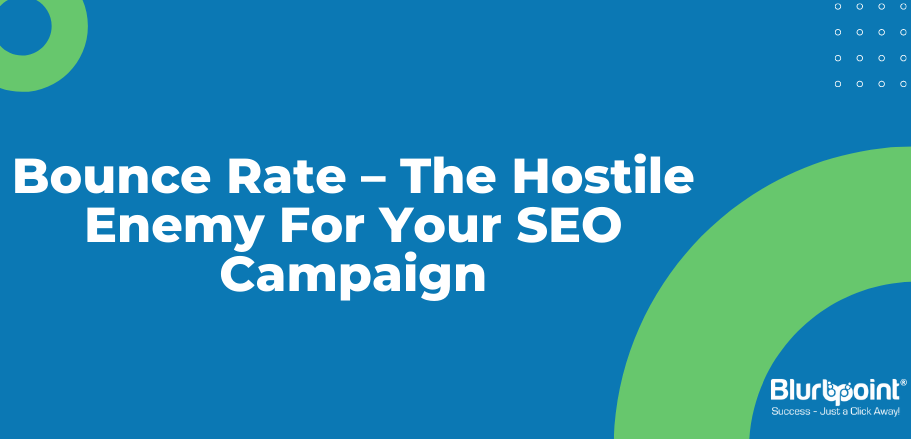GET A FREE CONSULTATION



Posted by Monish Vora
October 15, 2013
A website’s bounce rate could prove to be a deciding factor for SEO tactics to be implemented. This post deals with lowering the bounce rate to a certain extent, so as to increase the engagement rate of your website.
Prior to that, let us understand some basic points about the bounce rate. Here are the answers to some common questions pertaining to the bounce rate.
In simple terms, bounce rate shows the number of visitors who went back to the search engine in a very short time after getting directed to your website through the search engines. The reason to go back would be to find some more useful information, inability to relate to your site, or they didn’t like the look of your site. They don’t care to surf through the rest of the pages of your website.
The bitter truth is that a higher bounce rate will have negative effects on your SEO campaign. A higher bounce rate would prove that your webpage doesn’t offer any value to the visitors, though it contains the relevant keywords. This will enforce the search engines to drop your rankings and bring more relevant pages to the top of the search engine rankings.
There are a number of available tools however, the most convenient one would be Google Analytics that is committed to giving more accurate results.
The golden rule is that anything less than 30% is a low bounce rate. But 50% or high is a sign of danger, which requires performing some serious analysis to know the exact reasons behind the high bounce rate.
How does your website look?: The vital step for any website, at the fundamental stage is the layout and the design part. The website should be pleasing and appealing to the user if you want them to stay longer on the website. A website not organized well would create a very bad impression on the reader’s mind, forcing them to leave the site at once, ticking your bounce rate at an all-time high. The fonts that you select should be readable and at any point, the reader should not feel that the site has been built just for the sake of it.
Stick to the subject: Content is the key player for your website, as the visitors are coming in to get some relevant information for which they have entered the keywords in the search bar. The content has to be relevant, original and pertaining to the industry niche.
Check the loading time: A slow loading time would add to the bounce rate as impatient visitors will never wait for aeons for your website to load. Consequently, they will lose hope and leave the website. Avoid heavy files of pictures and videos on the webpage. Compress them, as they take less time to load.
External links: Sources of information would be highly appreciated if the links to them are provided on your webpage. Insert a link to some valuable source at the end of your content, so that the visitor could visit that page for more information. Make sure that the link opens in a new window so that the visitor could come back to your site when required.
Headline with targeted keywords: Use the keyword in the headline of your content on the webpage. Having said that, it is strongly advised to have the content related to the headline, else it would prove to be very harmful with the bounce rate at an all-time high.
Include a Search Box: Have search bars on your website so that the visitors could easily enter the topic of their interest and search for the same on your website.
About Us: Having an attractive About Us page, which gives detailed information on your business, the products and services, or even you.
Enable commenting: Having a comment box on the website would help to lower the bounce rate as the visitor stays for some time to enter his/her suggestion. Design a web page that refreshes each time a comment is entered.
Internal Linking: The best example of this is Wikipedia. If there are some more sources on your website, which you feel might interest the visitor, you could insert the links to those pages on your own website.
Pop-up windows: Do not disturb the visitors with pop-up windows emerging every now and then as it will devalue the user experience. Pop-up windows which are irrelevant and keep on popping up annoy a visitor the most.
Make your website mobile-friendly: It is strongly advised to have websites that are built keeping in mind mobiles and tablets. This could lessen the effect of bounce rates. The language in any version of your website should be lucid so that the users could easily grasp the given information.
These guidelines are meant to lower your bounce rate and if followed religiously, they will surely bring it down, at the same time enhance the overall user experience. High bounce rates are the cold-blooded murderers of your conversion and you need to make sure that the visitor’s get one great experience when they come on your site searching for things.